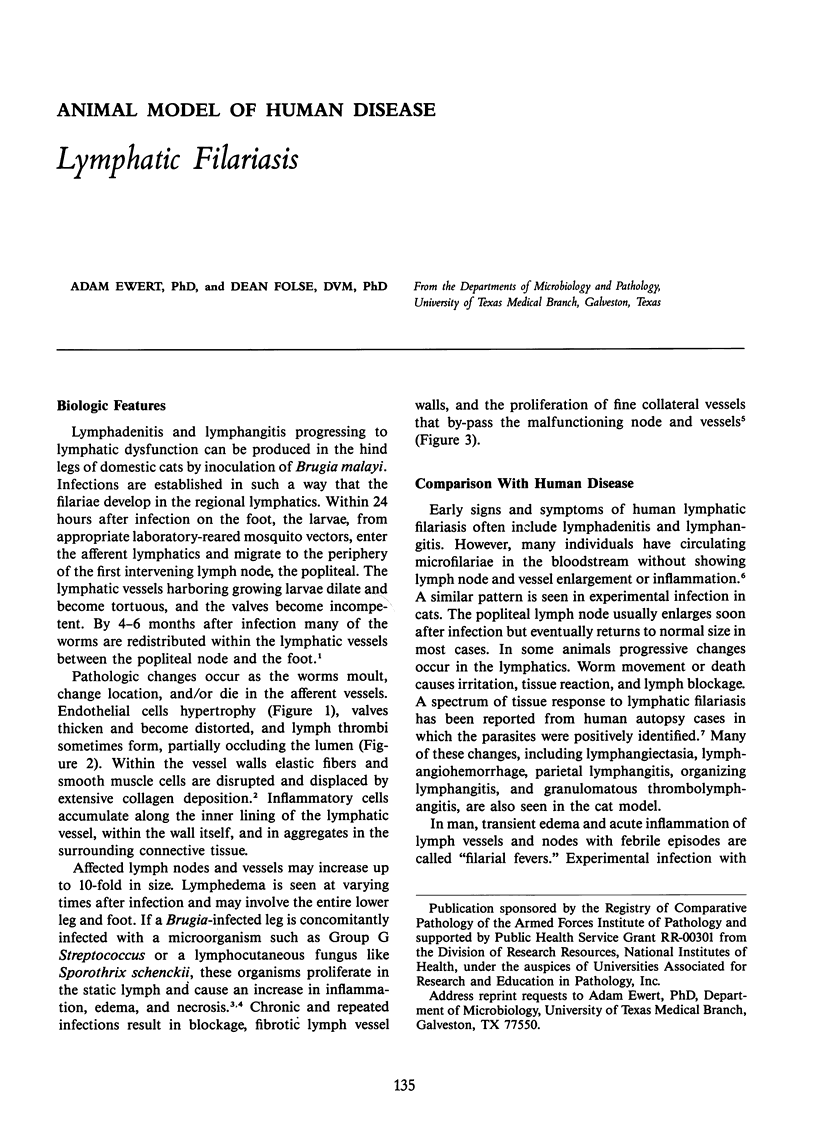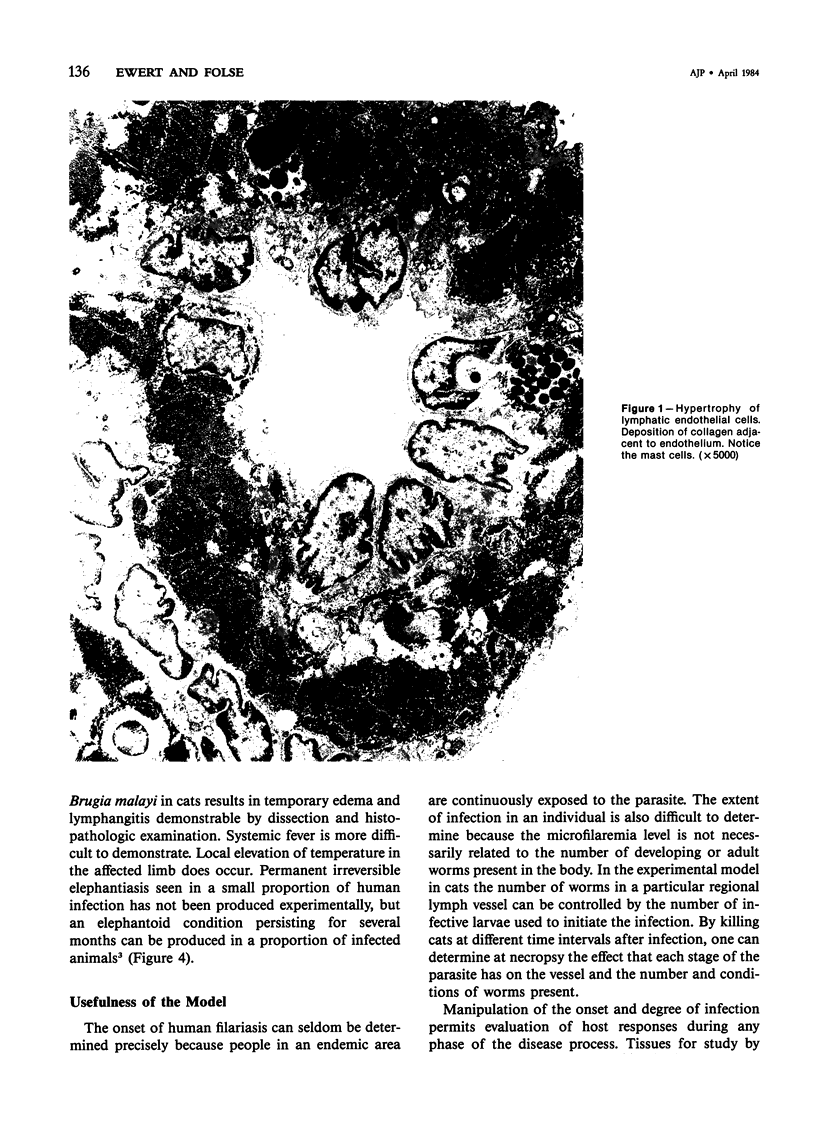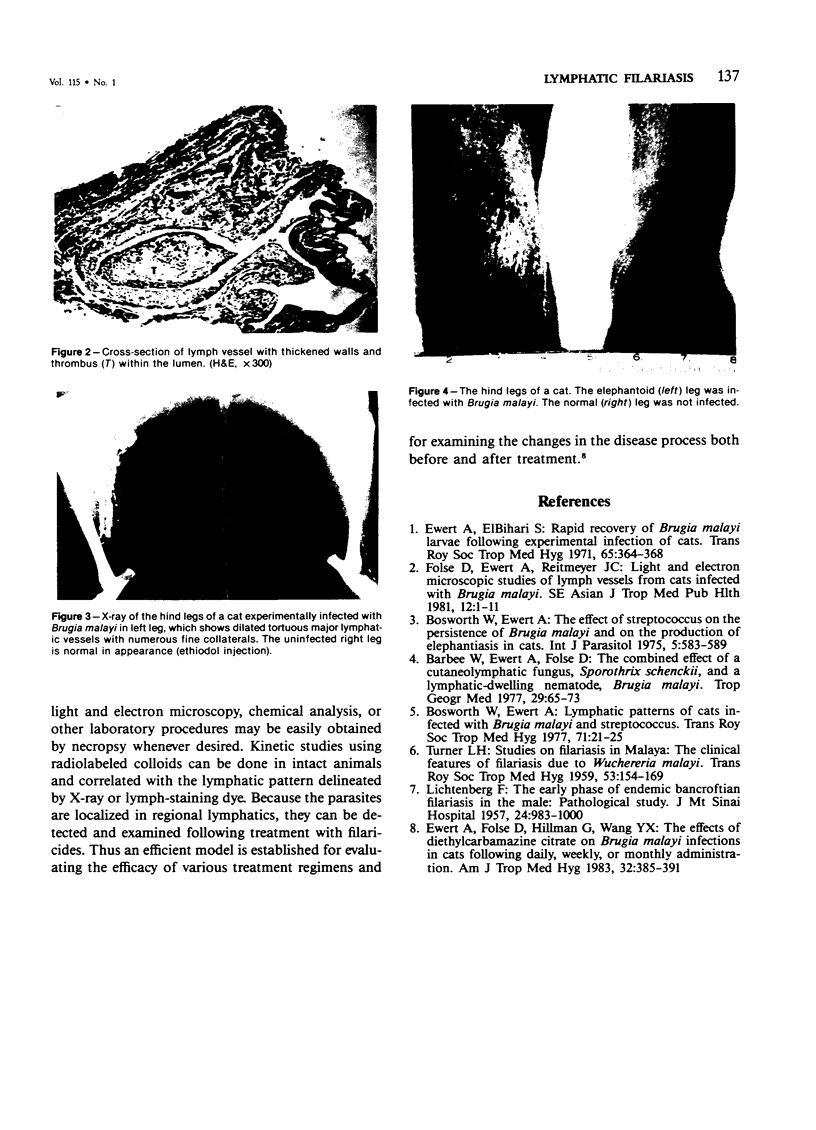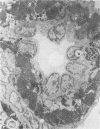Full text
PDF


Images in this article
Selected References
These references are in PubMed. This may not be the complete list of references from this article.
- Barbee W. C., Ewert A., Folse D. The combined effect of a cutaneo-lymphatic fungus, Sporothrix schenckii and a lymphatic-dwelling nematode, Brugia Malayi. Trop Geogr Med. 1977 Mar;29(1):65–73. [PubMed] [Google Scholar]
- Bosworth W., Ewert A. Lymphatic patterns of cats infected with Brugia malayi and streptococcus. Trans R Soc Trop Med Hyg. 1977;71(1):21–25. doi: 10.1016/0035-9203(77)90199-7. [DOI] [PubMed] [Google Scholar]
- Bosworth W., Ewert A. The effect of Streptococcus on the persistence of Brugia malayi and on the production of elephantiasis in cats. Int J Parasitol. 1975 Dec;5(6):583–589. doi: 10.1016/0020-7519(75)90056-9. [DOI] [PubMed] [Google Scholar]
- Ewert A., Folse D., Hillman G., Wang Y. X. Effect of diethylcarbamazine citrate on Brugia malayi infections in cats following daily, weekly, or monthly administration. Am J Trop Med Hyg. 1983 Mar;32(2):385–391. doi: 10.4269/ajtmh.1983.32.385. [DOI] [PubMed] [Google Scholar]
- Ewert A., el-Bihari S. Rapid recovery of Brugia malayi larvae following experimental infection of cats. Trans R Soc Trop Med Hyg. 1971;65(3):364–368. doi: 10.1016/0035-9203(71)90015-0. [DOI] [PubMed] [Google Scholar]
- LICHTENBERG F. The early phase of endemic bancroftian filariasis in the male; pathological study. J Mt Sinai Hosp N Y. 1957 Nov-Dec;24(6):983–1000. [PubMed] [Google Scholar]
- TURNER L. H. Studies on filariasis in Malaya; the clinical features of filariasis due to Wuchereria malayi. Trans R Soc Trop Med Hyg. 1959 Mar;53(2):154–169. doi: 10.1016/0035-9203(59)90066-5. [DOI] [PubMed] [Google Scholar]






